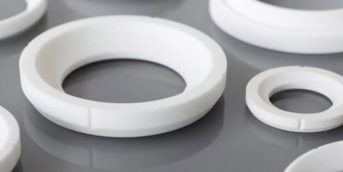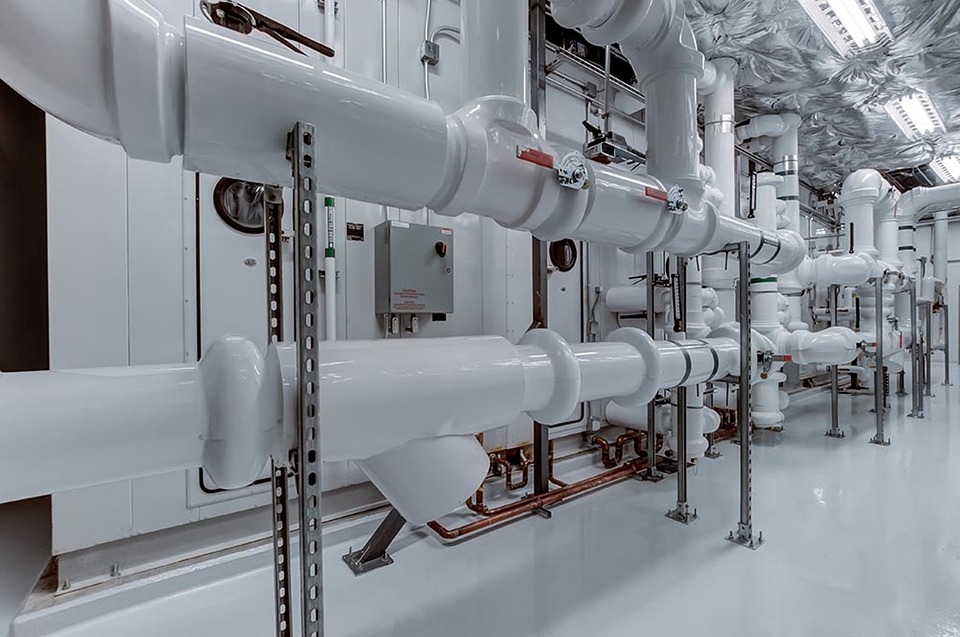Auto molding for PTFE components is a highly effective way to manufacture high-quality, high-volume runs of parts, including seals, seats, and valves. This blog post provides an overview of auto molding, then discusses when it is appropriate to use for PTFE parts as well as the benefits of using it.
What Is Auto Molding?
Auto molding, also known as compression molding, manufactures components by forcing heated plastic into a heated, open mold and then compressing it with an upper mold. It supports automated press cycling, and several parts can be made at once using multi-cavity molds. It is an efficient, high-precision method of manufacturing parts in an efficient, cost-effective manner without sacrificing quality and precision.
Auto Molding Process
Here is a summary of the auto molding process.
- Create Molds: Tool and die makers fabricate the molds through various methods such as precision machining, die casting, or advanced techniques like 3D printing. The mold design must support tight tolerances and repeatability to ensure accurate and consistent product quality.
- Set Up the Machine: The molding equipment is prepared by cleaning the molds, preheating as necessary, and configuring the press settings according to the material and part geometry.
- Prepare the Charge: The appropriate PTFE material (can be virgin or filled) is selected and measured to the correct amount.
- Insert the Charge: The material charge is placed at the center of the bottom mold cavity to ensure uniform compression.
- Compress the Part: The mold is closed, and a combination of pressure and heat is applied to shape the component.
- Release the Part: Once the part is fully formed and cooled, the mold is opened, and the part is removed.
- Clean and Finish: Any excess flash is trimmed, and additional finishing steps are performed. Then the part is ready for quality inspection.
When Auto Molding Makes Sense
Auto molding is cost-effective with low to medium production runs of straightforward, simple geometries (rings, cylinders, discs). It supports the manufacturing of thick-walled parts as well as those with large cross-sections. Auto molding is often preferred to prototyping and early-stage development, but is equally applicable to final parts. In addition, tooling for compression molding is typically less complex and less expensive than other manufacturing options, including injection molding and machining.
Auto molding allows for better control over PTFE composition and orientation, which can be beneficial in specialty applications like medical or aerospace components. In addition, some fillers are more easily processed due to lower shear forces and better filler retention in the final part.

Advantages of Auto Molding for PTFE Components
Auto molding supports high-volume production runs with shorter lead times for large batches. Another key benefit is consistent mechanical properties across parts and scalable tooling. It leads to reduced scrap rates. Lower tooling costs and efficient production contribute to auto molding as a cost-efficient option for the manufacturing of many PTFE parts.
Applications That Rely on Auto Molding
Numerous industries depend on auto molded PTFE parts, including semiconductor manufacturing, aerospace, medicine, and chemical processing. Parts include bearings, bushings, sleeves, piston rings, gaskets, seals, valve seats, diaphragms, and bellows.
Conclusion
Auto molding offers a reliable, efficient method for producing precision PTFE components at scale. Its suitability for high-volume runs, straightforward part geometries, and tight tolerances makes it an optimal solution for applications where consistency, repeatability, and cost-efficiency are critical. From aerospace to semiconductor manufacturing, auto molding continues to deliver proven value across industries that depend on high-performance polymer parts.
If you are looking at manufacturing options for PTFE components, contact us at Advanced EMC today. Our team will work with you from material section through manufacturing to ensure you get the parts you need.


